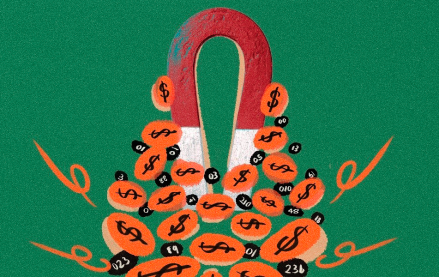
This article is part of the Digiday Partner Program and is brought to you by OpenX Revenue Intelligence. To learn more about OpenX Revenue Intelligence, watch the webinar entitled “How to Optimize Content to Grow Revenue” hosted by Anke Audenaert.
So much for front-page news. More and more readers are bypassing publishers’ home pages, still the marquee for breaking news and big-ticket brand campaigns, in favor of direct links from search engines, social feeds and aggregators.
These side doors increase traffic to popular content, but also encourage a high bounce rate, flummoxing publishers who aim to keep readers on site racking up impressions.
“We would like to increase the amount of time people spend on site, but the whole momentum of the Internet is against it,” said Jason Pontin, editor-in-chief and publisher of the MIT Technology Review. “A lot of people don’t even finish the story they’ve come to on an impulse.”
In response, publishers are turning to readers’ new point of entry, the article page.
Ad position: web_incontent_pos1
“Our new idea is to treat each article page as if it’s a mini home page,” said an executive at one major publisher. Only about 5 percent of visitors to his site, a national news and analysis magazine, enter through the homepage, he said.
Site redesigns still include a flashy front page, but publishers now see the article page as their best chance to keep readers on the site via content referrals. Designers agree.
“The data has always in a way said it comes through the side door,” said Dan Gardner, co-founder and creative director of user experience at Code and Theory in New York. “When we do a publisher site we never start with the home page. It’s always the article page we do first.”
Ad position: web_incontent_pos2
Gardner says the bottom of the page, often used exclusively for commentary, is prime real estate for publishers who want to drive readers to other content on the site. He also said image boxes, rather than simple text links, work well.
With this backdrop of changing behavior, it’s important for publishers to take control of the traffic flow through their site, said Anke Audenaert, VP of Revenue Intelligence for OpenX. OpenX is taking a fresh approach to this challenge, with algorithms that blend both engagement value and ad monetization, she said.
Traditionally, publishers have managed editorial and advertising separately, leaving content promotion in the hands of editors or algorithms that skew toward relevance.
“The Daily Mail has lots of pictures of nubile people and stars,” said Pontin. “We track the kinds of other stories you’ve been reading on site.”
But at a time when many publishers are hurting for revenue, Audenaert argues they have an obligation to consider content that is relevant but also performing financially. “Publishers are concerned with what users like and lose themselves in the mix,” said Audenaert.
Revenue Intelligence, Audenaert said, helps publishers determine which content is really working for them. Its algorithm, she said, calculates cumulative CPM by tracking each piece of content’s downstream traffic and revenue starting at the source—be it a home page, article page or Twitter feed. Based on those calculations—viewable within a real-time dashboard—a publication can decide just which content is bringing in the most revenue.
That might be a high-priced channel like finance. Or it may be a lower-CPM dark horse like entertainment, whose readers are more likely to click around instead of bouncing back to their portal, she said. Each click racks up an impression, tallying more advertising revenue. For some newspaper clients, revenue has increased 30-90%, according to Audenaert.
Publishers who find this information before or during a redesign might reconsider which department really is their cash cow. Perhaps entertainment, not finance, gets the best placement and more promotion on social feeds.
“We have a very large newspaper chain that programs hard news based on their editorial expertise,” said Audenaert. “But they will have earmarked a few parts of their site where they will promote other news that generates more revenue.”
As social media, search engine optimization, and aggregators change how people find content, it’s time for publishers to rethink how they promote it. Article pages are a good place to start, Audenaert said.
Dive deeper into this topic at next week’s webinar entitled “How to Optimize Content to Grow Revenue” hosted by Anke Audenaert on Thursday May 16th at 11:00 AM Pacific/2 PM Eastern.
More from Digiday
Sliders test article
Agencies hope connected TV and digital out-of-home will play a bigger role in upcoming elections and politics — especially for smaller media agencies that are handling many of the less visible races in the crowded political space. For a number of media agencies looking to place their political ad dollars down in this major election […]

How CTV and DOOH are growing this political season for smaller agencies
Connected TV and digital out-of-home are playing a bigger role in upcoming elections and politics – especially for smaller agencies looking to place clients’ dollars.

CMO Strategies: Advertisers identify the top attributes on ad-supported streaming platforms
This is the third installment in Digiday’s multi-part series covering the top ad-supported streaming services and part of Digiday’s CMO Strategies series. In this report, we examine which ad attributes matter the most to marketers on streaming platforms.
Ad position: web_bfu